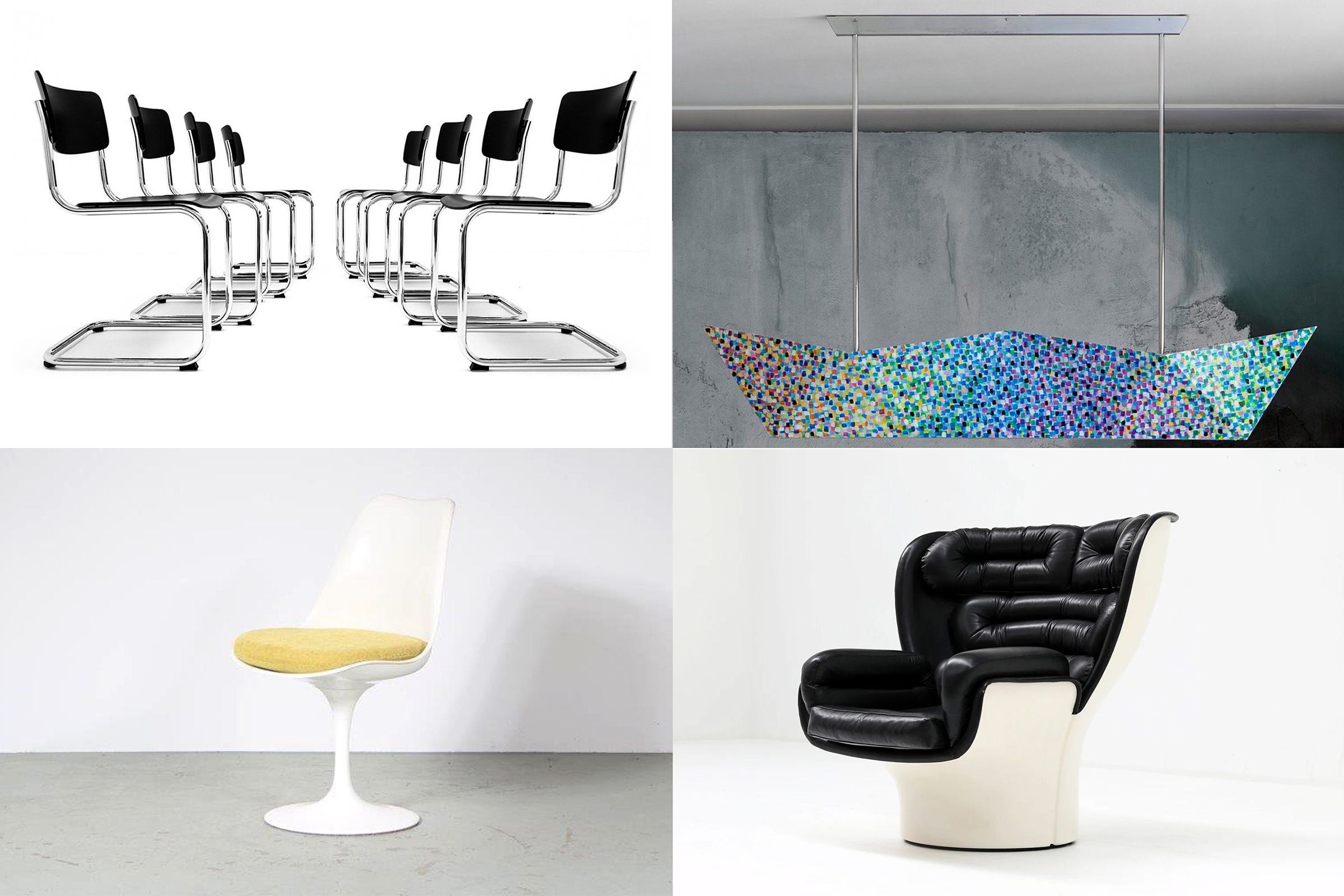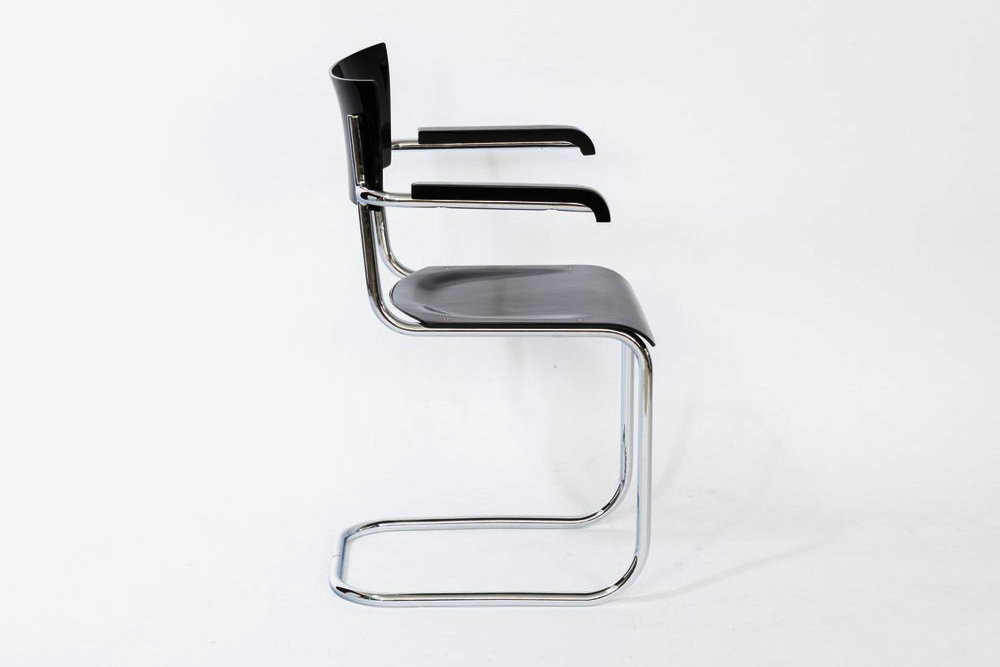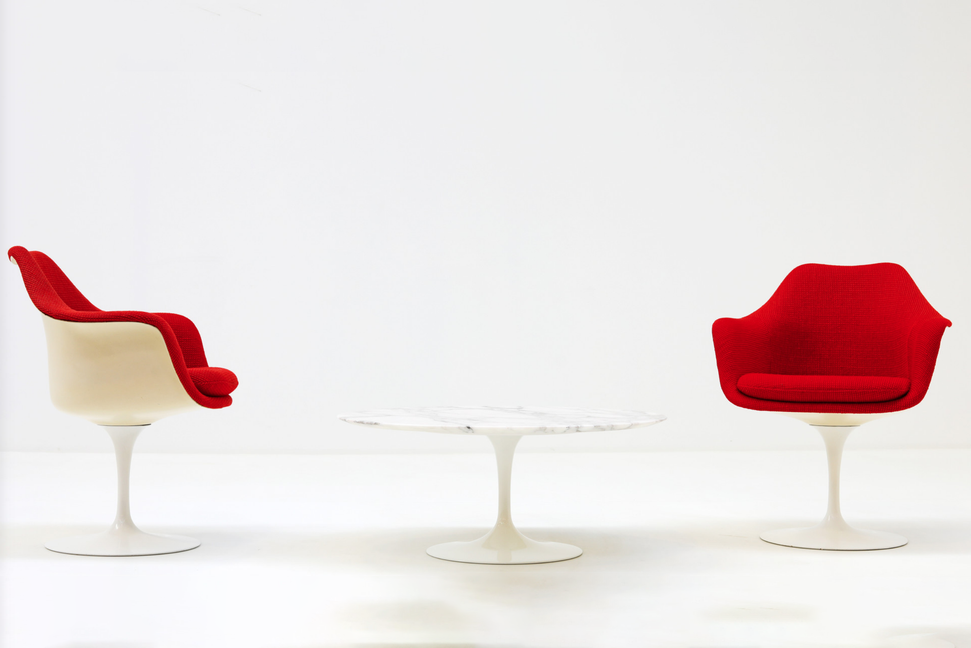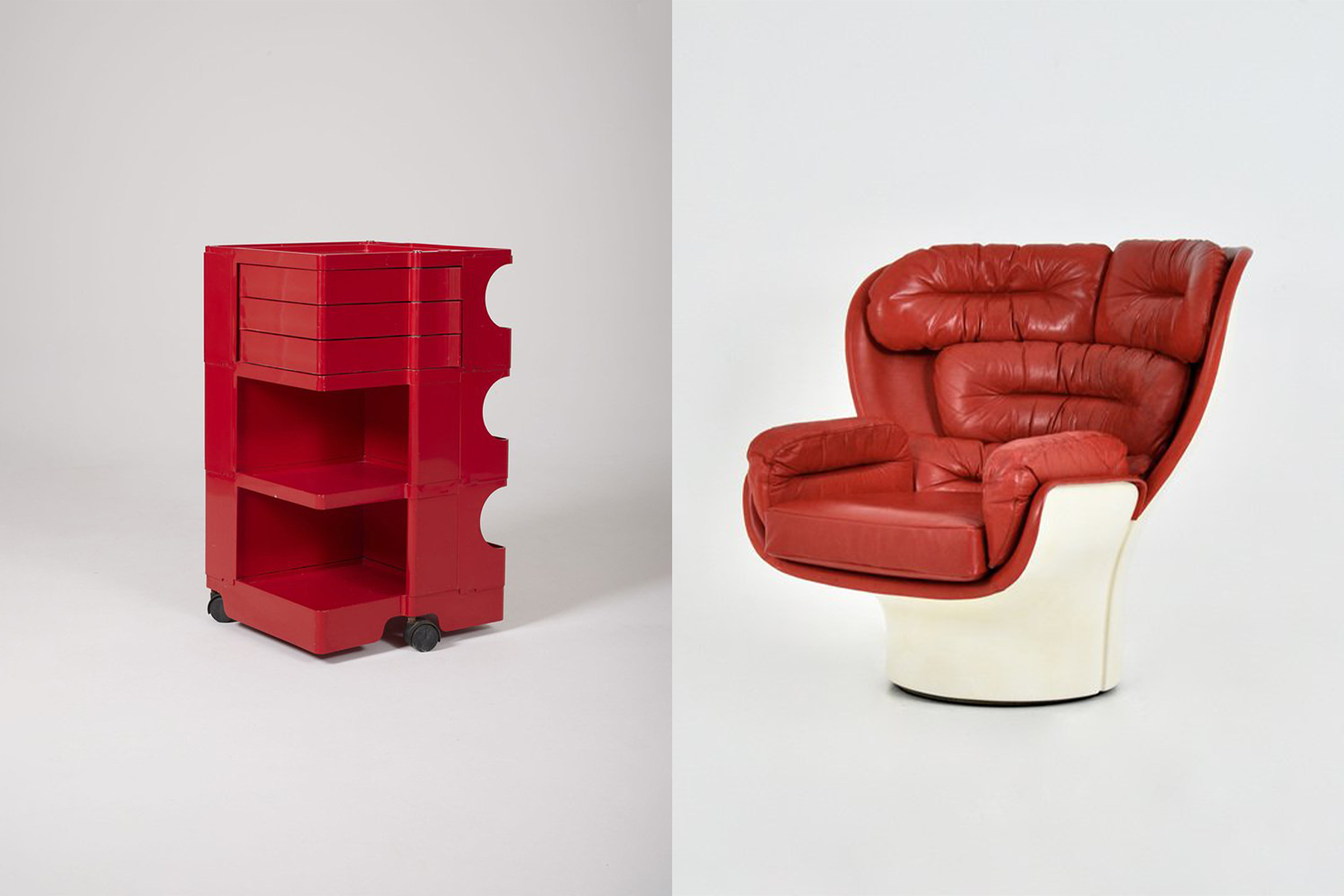Stam, Saarinen, Colombo, and Mendini—trailblazing Leos of design history
Born This Way
"Our remedies oft in ourselves do lie / Which we ascribe to heaven: the fated sky / Gives us free scope, only doth backward pull / Our slow designs when we ourselves are dull."
—All's Well That Ends Well by William Shakespeare
We've noticed that the calendar these days is punctuated by the birthdays of four design powerhouses. Mart Stam, Eero Saarinen, Joe Colombo, and Alessandro Mendini were all trailblazers in their day who left an indelible mark on design history. Each is credited with at least one "first" in their field. And as it turns out, they are all, astrologically speaking, Leos.
We're not all-in on astrology by any means, but we thought it'd be fun to examine these design heroes through the lens of Leo characteristics: passionately creative, eternally optimistic, fiercely outspoken, boldly ambitious, seductively charming. All of which plays into Leos' reputation as natural-born leaders. Let's see how our design Leos measure up to their star charts!
Mart Stam (5 August 1899)
Best remembered today for his cantilever chair design and a handful of early modernist homes, Dutch architect Mart Stam was a committed idealist, militantly determined to use design to, in his words, "change the world." From his practice and writings to his political endeavors, he never approached anything by halves.
Throughout his career, Stam championed radical aesthetic purity alongside a sprawling utopianism—even as other modernists began to soften the rigor of functionalist theory. During World War I, he went to prison as a conscientious objector and emerged a devoted communist. In the 1920s, he won a contentious lawsuit against Marcel Breuer and Ludwig Mies van der Rohe over the right to claim his cantilever chair design to be the first of its kind. A decade later, his idealism took him to the Soviet Union and later to the GDR, where he believed his strict design approach would find fertile ground. Over and over, Stam's inability to compromise on his principles led to dramatic tussles with his many collaborators, who often asked him to just leave.
By the 1960s, he completely renounced his utopian aims in a fit pridefulness brought on by both disillusionment and illness. Until his death in 1986, he and his wife lived itinerantly in hotels and spas, never staying in any one place too long. One of the last moments we know about Stam's life is when someone from furniture manufacturer Tecta tracked down a number for him and gave him a call. Stam reportedly responded, "I do not know any Mart Stam," and hung up.
Eero Saarinen (20 August 1910)
Finnish-American architect Eero Saarinen's myriad contributions to design history include the Womb Lounge (1947-48) and Tulip Collection (1956) for Knoll, alongside his Case Study House #9 (with the Eameses, 1945-49), Saint Louis Gateway Arch (1947-65), General Motors Technical Center (1948-56), MIT Chapel (1950-55), Miller House (1953-57), and TWA Terminal (1956-62). This list of historical landmarks is nowhere near complete. Saarienen was something of an overachiever, who once told his second wife that she had to understand that architecture was his "one true love."
Described as "a dynamo of relentless energy" in a 1956 Time Magazine cover story, Saarinen won his first design competition at age 12, a miniature construction in matchsticks. By age 20, he was designing furniture for his esteemed architect father's buildings at Cranbrook. At the Yale School of Architecture he "won so many school prizes (including one for holding his liquor) that he got a medal for winning the most medals." Of course, he graduated with honors. In 1948, he beat out his own father for the design of the St. Louis Jefferson National Expansion Memorial, resulting in the city's famous arch. His Tulip Chair (aka Pedestal Chair) is dubbed the very first chair to feature only one leg, his personal triumph over what he dubbed "the slum of legs in the U.S. home."
Saarinen's unyielding commitment to his creative practice is summed up nicely in a legendary anecdote: At 8am on one New Year's Day, he walked into his office and found only his assistant. He looked around and snapped, "Where the hell is everybody?" What else would you expect from such a prolific talent? Sadly, Saarinen's life and creative output were cut far too short; he died at age 51 from a brain tumor.
Joe Colombo (30 July 1930)
"The possibilities presented by the extraordinary development of audiovisual processes are enormous. Distances will no longer have much importance… furnishings will disappear… the habitat will be everywhere. Now, if the elements necessary to human existence could be planned with the sole requirements of maneuverability and flexibility, then we would create an inhabitable system that could be adapted to any situation in space and time." This is Italian designer Cesar Joe Colombo prediction from a lecture back in 1960.
As the quote shows, Colombo was a far-reaching visionary who embraced infinite possibility, impatient for the future to arrive as soon as possible. Despite the fact that he died so young—tragically of a heart attack at age 41—his legacy of innovation influenced the generations of designers that followed and they way we continue to think to this day.
Regularly characterized as extraordinarily dapper and charming, Colombo spoke his futuristic design language through molded, biomorphic plastic forms that were always modular, adaptable, and flexible; no sharp corners to be found anywhere. He breathed dynamism into everyday domestic products. Just think of his Acrilica Lamp (1962), Elda Chair (1963), Coupé Lamp (1966), Tube Chair (1969–70), Boby Storage System (1969), for instance. His stackable Universale Chair for Kartell (1965-68) was the first all-plastic chair to be made by injection-molding and one of the first plastic chairs to be commercially available.
But he didn't just design individual objects—Colombo designed new ways of living. His Kitchen Box (1963), Cabriolet Bed (1969), and Total Furnishing Unit (1972), for instance, took notions of all-in-one, compact portability to a whole new level, with features like TVs that retract into the ceiling, pivoting walls with built-in mini-bars, and control panels to turn on a fan, light a cigarette, and make a phone call. All the way back in the 1960s, he told fellow designer Gae Aulenti that soon phones would be carried around in pockets. Colombo was there before all of us.
Alessandro Mendini (16 August 1931)
Italian architect, designer, painter, journalist, editor, critic, and theorist Alessandro Mendini was a one-of-kind Renaissance man. Between the 1970s and his passing earlier this year, he played an unparalleled role in broadening the world's understanding of what design is—and what it can be—doggedly working to shift the paradigm from modernism to postmodernism and beyond, especially through his sui generis ideas on radical design, banal design, re-design, and the symbolic value of design objects.
Through the decades, Mendini advanced vangarde, game-changing design projects, from Global Tools, Alchimia, and Memphis, to the founding of the Domus Academy and his own studio Atelier Mendini, alongside his ever-present, provocative editorial work in magazines like Casabella, Modo and Domus. Revered design expert Alice Rawsthorne recently said of him: "Even if you’ve never heard of Alessandro Mendini, you’re bound to have been affected by his work. That’s because our lives would be different without him."
Mendini is responsible for a number of "firsts" because he repeatedly aimed to do what no one else was doing. His best known work is his iconic Proust Lounge (1978), wherein he intervened upon a found vintage Rococo Revival easy chair by hand-painting it in the Pointillist style of 19th-century painter Paul Signac to evoke the image of Marcel Proust and his romantic writings. Lesser known but equally lyrical are his dirt-filled Terra Chair (1974), the performatively torched Lassù Chairs (1974), and his iconoclastic makeover of Breuer's Wassily Chair (1978). And don't forget all his eccentric architectural masterpieces, like the flamboyantly colorful Groninger Museum (1988-1994).
Although he persistently and earnestly aimed to draw critical attention to the downsides of consumer-driven culture, no one could ever say Mendini was a boring killjoy. Quite the opposite. He explained his inspiring signature mission of bringing design closer to art in this way: “I think that besides being functional, an object must have a soul and express friendliness.”
-
Text by
-
Wava Carpenter
After studying Design History, Wava has worn many hats in support of design culture: teaching design studies, curating exhibitions, overseeing commissions, organizing talks, writing articles—all of which informs her work now as Pamono’s Editor-in-Chief.
-
More to Love
Italian Chrome and Metal Spider Desk Lamp by Joe Colombo for Oluce, 1960s

Small Orange Petalo Vase by Alessandro Mendini for Purho

Large Blue Petalo Vase by Alessandro Mendini for Purho

Le Ninfee Medium Coffee Table by Alessandro Mendini for Ghidini 1961

Cantilever Armchairs by Mart Stam, 1980s, Set of 2


 Mart Stam Bauhaus Black and Chrome S 43 Cantilever Chairs by Thonet / Photo © Cherished Designs UK Deriva Proust Hanging Lamp by Alessandro Mendini / Photo © Fragile Srl Tulip Chair by Ero Saarinen for Knoll / Photo © De Vreugde Design B.V. Elda Chair by Joe Colombo for Comfort, 1960s / Photo © WAUW.BE
Mart Stam Bauhaus Black and Chrome S 43 Cantilever Chairs by Thonet / Photo © Cherished Designs UK Deriva Proust Hanging Lamp by Alessandro Mendini / Photo © Fragile Srl Tulip Chair by Ero Saarinen for Knoll / Photo © De Vreugde Design B.V. Elda Chair by Joe Colombo for Comfort, 1960s / Photo © WAUW.BE
 Bauhaus Armchair by Mart Stam, 1930s - Photo © Zeitlos By Drozd
Bauhaus Armchair by Mart Stam, 1930s - Photo © Zeitlos By Drozd
 Tulip Armchairs by Eero Saarinen for Knoll - Photo © WAUW.BE
Tulip Armchairs by Eero Saarinen for Knoll - Photo © WAUW.BE
 Trolley by Joe Colombo / Photo © GALERIE PARADIS - Elda Lounge Chair by Joe Colombo for Comfort Italy, 1960s / Photo © Sivota srl
Trolley by Joe Colombo / Photo © GALERIE PARADIS - Elda Lounge Chair by Joe Colombo for Comfort Italy, 1960s / Photo © Sivota srl
 Alex Chaise Longue by Alessandro Mendini for ecopix - Photo © ecopixel
Alex Chaise Longue by Alessandro Mendini for ecopix - Photo © ecopixel
